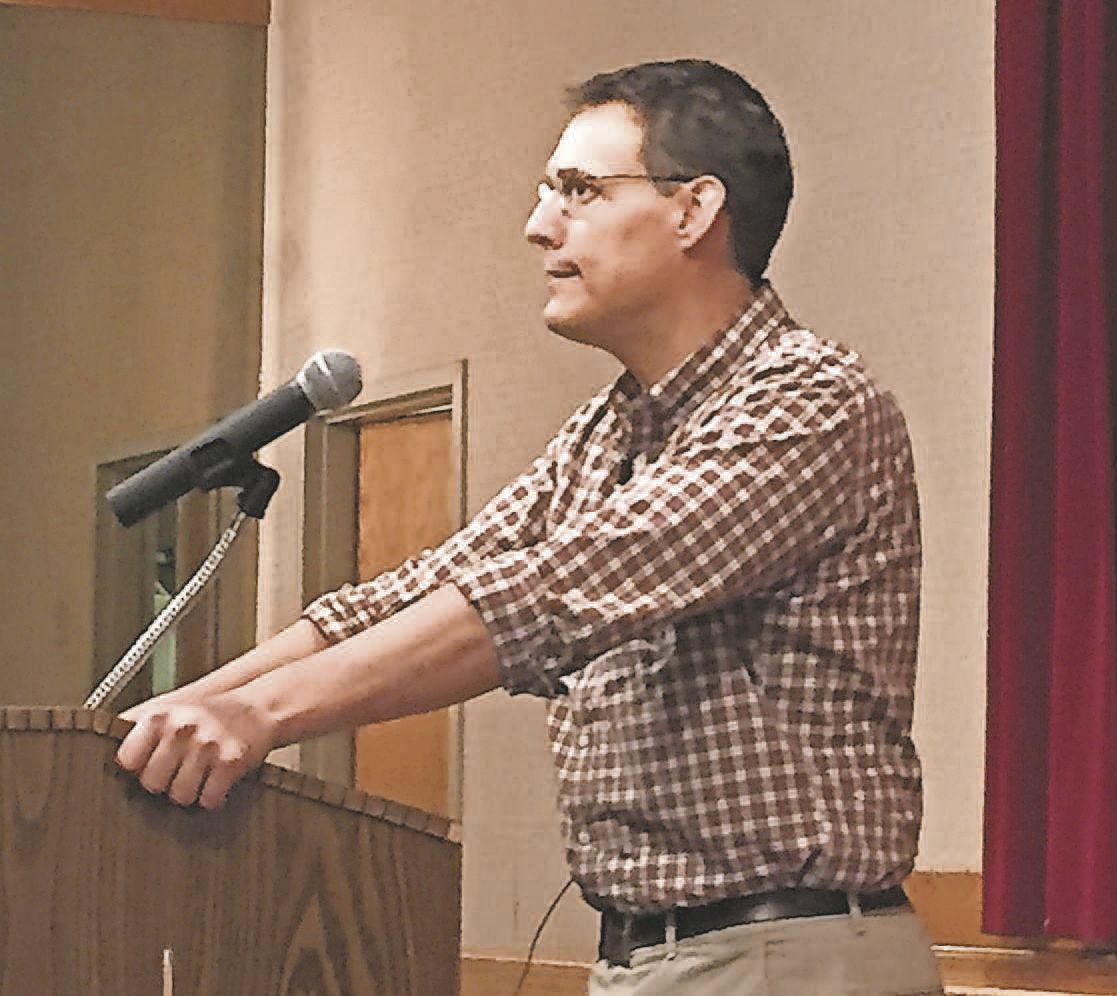By Philip Sean Curran, Staff Writer
MSNBC’s Steve Kornacki, in an appearance in Princeton on Thursday, said the tightening presidential race between Hillary Clinton and Donald Trump is due to a series of factors that include the presence of third party candidates.
Before a crowd of more than 400 in the Jewish Center, Mr. Kornacki analyzed a contest that polls this week show is neck and neck. Ms. Clinton’s once double-digit leads in places like Michigan and Pennsylvania have been shaved to mid-single digits, with Mr. Trump ahead in swing states of Ohio and Florida.
“So the name of the game, if you’re Donald Trump, is you’ve got to flip blue states. You’ve got to flip states that voted for Barack Obama in 2012,” he said.
In part, he said the presence of Libertarian Gary Johnson and Green Party candidate Jill Stein in the contest benefits Mr. Trump. That comes into play with millennial voters, a group that Ms. Clinton did poorly with in the Democratic primary against Vermont Sen. Bernie Sanders, he said.
In a head-to-head match up, he said Ms. Clinton does well against Mr. Trump among voters under 30.
“A lot of it has to do, I think, with his views on immigration, with the inflammatory racial comments he’s made,” Mr. Kornacki said. “Voters under 30 are much, much more likely than any other group to call Donald Trump a racist. And that’s a barrier that most people under 30 are not going to cross to vote for a candidate.”
But when it becomes a four-way race, Mr. Kornacki cited a Quinnipiac University poll of voters under 35 in which Ms. Clinton had 31 percent, with Mr. Johnson in second at 29 percent and Mr. Trump in third at 17.
“Think about that,” he said to a crowd that began to murmur when he gave Mr. Johnson’s numbers.
“(I)f you’re Hillary Clinton, the name of the game is you’re trying to replicate the Obama coalition in 2008 and 2012,” he said. “That means you are counting on winning millennial voters by at least 20 points. That’s got to be your goal.”
“When you have a four-way presidential race, when you’ve got four candidates who are getting a significant chunk of the vote, that also introduces the possibility that the winning number, the candidate who wins nationally can do it with 42, 43 percent of the vote,” he continued.
He said he sees that as significant for Mr. Trump, because he said he thinks there is a “ceiling” on the Republican’s support at a time when 60 percent of Americans think he is biased against women and minorities, according to a poll.
“I think the negative views on Trump are so deep and so strong in a way we really haven’t seen with a major party nominee in a long time, that it imposes a ceiling on him,” Mr. Kornacki said. “And so the key for Trump is, if you have a real four-way race in this country, where Gary Johnson is drawing real votes, Jill Stein is drawing real votes, then that ceiling problem goes away for Donald Trump, because you can win with 42 percent of the vote, 41 percent of the vote, 43 percent of the vote in a four-way race. You’re not going to do that in a two-way race against Hillary Clinton.”
Earlier in his remarks, he explained how the methodology in polling changed around Labor Day, from surveying all registered voters going to the “likely voter model.”
“This is a traditional thing that pollsters do when you get from the spring and summer months when the election is sort of a far-off thing,” he said. “In the minds of the pollsters, it weeds out people who probably just aren’t going to turn out and vote.”
He said that when pollsters go from registered voters to likely voters, it “tends to benefit” Republican candidates.
“The groups, the types of voters historically who are least likely to turn out tend to be more favorable to the Democrats,” he said.
Recalling recent history, he pointed to how Republicans and conservatives were dismissive of “skewed” polling data showing Mr. Obama leading GOP challenger Mitt Romney in 2012. They believed the polls had underrepresented GOP voters and overrepresented Democratic voters, he said.
As it turned, the polls were right, he said. Now four years later, he said he is seeing those same sorts of criticism on the left dismissive of polls going in Mr. Trump’s direction.
He also pointed to how Ms. Clinton has also been the victim of a bad news cycle, that included her having to be helped into a vehicle at a 9/11 ceremony in New York on Sunday and a previously undisclosed diagnosis of pneumonia. He said that with a video of the incident floating around, the Clinton campaign took a “long time” before telling the press “what was going on.”
“Fair or not, that created a very bad story for the Clinton campaign, worse than just having pneumonia, worse than just having a health incident at the Ground Zero ceremony,” he said.
Mr. Kornacki, 37, is no stranger to New Jersey politics. For four years, he worked at PoliticsNJ.com, a website that covered the state political scene, starting in 2002. He later wrote for the New York Observer until being laid off in 2009, with the paper’s owner being Jared Kushner, Mr. Trump’s son-in-law.
“I try not to let that influence my coverage,” he said.
Mr. Kornacki’s audience was at a meeting of the 55-Plus, a group of people 55 and over.
In response to an audience question about press coverage of the race, he said there was and remains “extensive media scrutiny” of Mr. Trump. Yet he said there is “a significant chunk” of the Republican Party “that probably grew closer to him and tighter to him because of that scrutiny.”

